Abstract 3/2016
Table of content
Michał Beim – Best practices in the transport of bicycles by regional railways
Anna Zalewska – Changes in the private carriers market in urban transport in Lublin
Sławomir Goliszek, Marcin Połom – Comparison of accessibility of public transport in provincial centers of Eastern Poland at the end of the EU perspective 2007-2013
Marta Borowska-Stefańska – Transport accessibility of firefighters to social objects located within areas exposed to floods in the Łódź region using network analysis
Abstracts
Michał Beim
Best practices in the transport of bicycles by regional railways
Abstract: Integration of everyday cycling and bicycle touring with regional railways significantly contributes to the popularity of cycling and public transport as well. On weekdays, the railway expands four times its scope. On weekends cycling tourists are an additional source of revenue. Among various forms of integration of the regional railway and bicycle traffic (e.g. Bike&Ride, public bicycle rental system) the carriage of bicycles on trains causes the most controversy. On the one hand it is the most expensive form of integration. On the other hand, it is a common cause of conflicts between passengers without a bicycle and cyclists. This article presents examples of the best practice in the transport of bicycles by rail regional. Well-prepared solutions help to reduce conflicts and to provide comfort for all passengers. Key factors are: good passenger information at every stage of the journey and the proper arrangement of the interior of the vehicle. Contrary to popular belief, hanging bicycles vertically on hooks is not suited for regional trains.
Keywords: bicycles carriage, regional railways, cycling, bicycle touring
Anna Zalewska
Changes in the private carriers market in urban transport in Lublin
Abstract: Public transport in every larger city is serviced by municipal and private carriers. On the Lublin transport market, private carriers have been functioning since 1990, providing transport services included in the schedule of communal carriers. Lublin’s example is unique comparing to other Polish cities. Private carriers operate today but in a completely different form than at the turn of the 21st century. Launch of the Public Transport Authority in Lublin resulted with the regulation of the transport system in the city and its unification. This article presents a short outline of private urban transport since its origins at the market and the changes that have been taking place so far. Public procurement procedures are organized by the Public Transport Authority (ZTM) in Lublin to provide services on the a precise number of vehicle-kilometers scheduled in a specific timetables. In most of the cases carriers do not operate on the entire line, but one or several units (timetables), the line is operated by two or more carriers (for example lines 10 and 17). This is caused by the fact that private carriers selected in the first public procurement procedures in 2010, were contracted to the schedules previously operated by the so-called „private transport”. Since it is an unusual situation for the public transport market in Poland, the article further discusses, i.a. the formula of public procurement procedures for the operation of particular transport lines in Lublin. This article also describes assumptions for the selection of contractors as well as a draft of the agreements that Public Transport Authority in Lublin concludes with private carrier (selected in the public procurement procedures) for providing public transport services.
Key words: public transport, private transport, private carriers, passenger information
Sławomir Goliszek, Marcin Połom
Comparison of accessibility of public transport in provincial centers of Eastern Poland at the end of the EU perspective 2007-2013
Abstract: The article presents the accessibility status of collective transport in Polish provincial centers of Eastern Poland at the end of the EU perspective 2007-2013. The study was conducted in the end of 2013. In the article the infrastructure investments from the EU perspective 2007-2013 are presented. The analyzed period demonstrates accessibility of public transport after implementation of the key investments from the completed financial perspective. Infrastructure investments, on which the analysis of the accessibility of public transport is based, have been presented in the two expertises devoted to cities of Eastern Poland. The main objective of the study is to verify whether funds from the EU perspective for 2007-2013, which had been intended to improve the functioning of public transport, have been spent effectively. An additional objective is to compare the accessibility of transport in cities. Analysis of the accessibility of public transport in a one-dimensional way presents changes of the isochrones surface, journey time, numbers of people and a population density located in the isochrones in the 2013 year.
Keywords: EU funds, improving the accessibility of public transport, infrastructure investments.
Marta Borowska-Stefańska
Transport accessibility of firefighters to social objects located within areas exposed to floods in the Łódź region using network analysis
Abstract: The goal of this article was to assess the transport accessibility of fire brigades operating in the Łódź region, to the social objects located within areas exposed to floods in 21 communes of the Łódź region with high and very high index of flood risk. Based on the Topographic Objects Database social objects have been identified within flood hazard areas (in the surveyed municipalities) and also fire brigades. For next part of research it was necessary to use also OpenStreetMap (OSM). It was found that fire brigades accessibility to almost half of the social objects is possible within 15 minutes, while up to 51% of cases time accessibility exceeds 15 minutes. It refers – to particular municipalities in the southern part of the Łódź region, i.e. Gidle, Radomsko. Therefore, in case of flooding in this region involvement also of other emergency services including police is needed.
Keywords: social objects, areas exposed to floods, fire brigades, transport accessibility, OpenStreetMaps

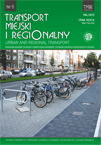 SITK RP
SITK RP 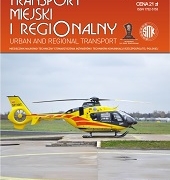 SITK RP
SITK RP 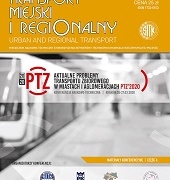
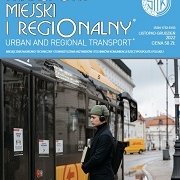 SITK
SITK 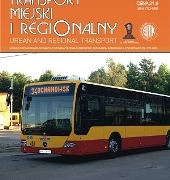 SITK RP
SITK RP 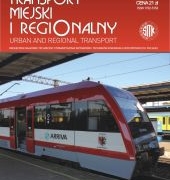 SITK RP
SITK RP 
 SITK RP
SITK RP SITK RP
SITK RP